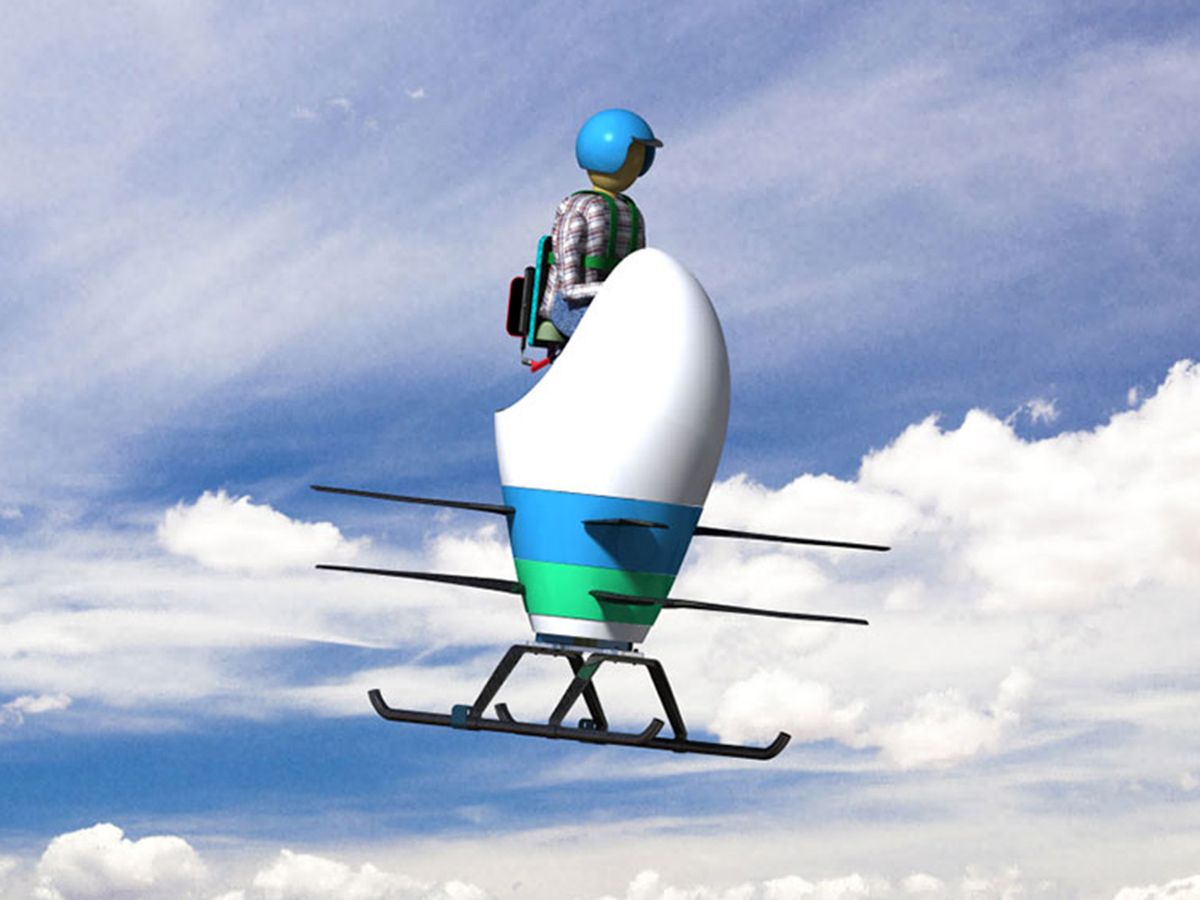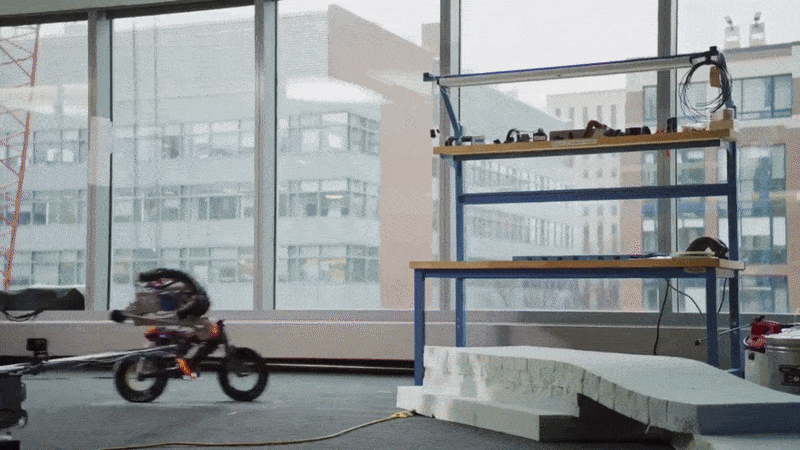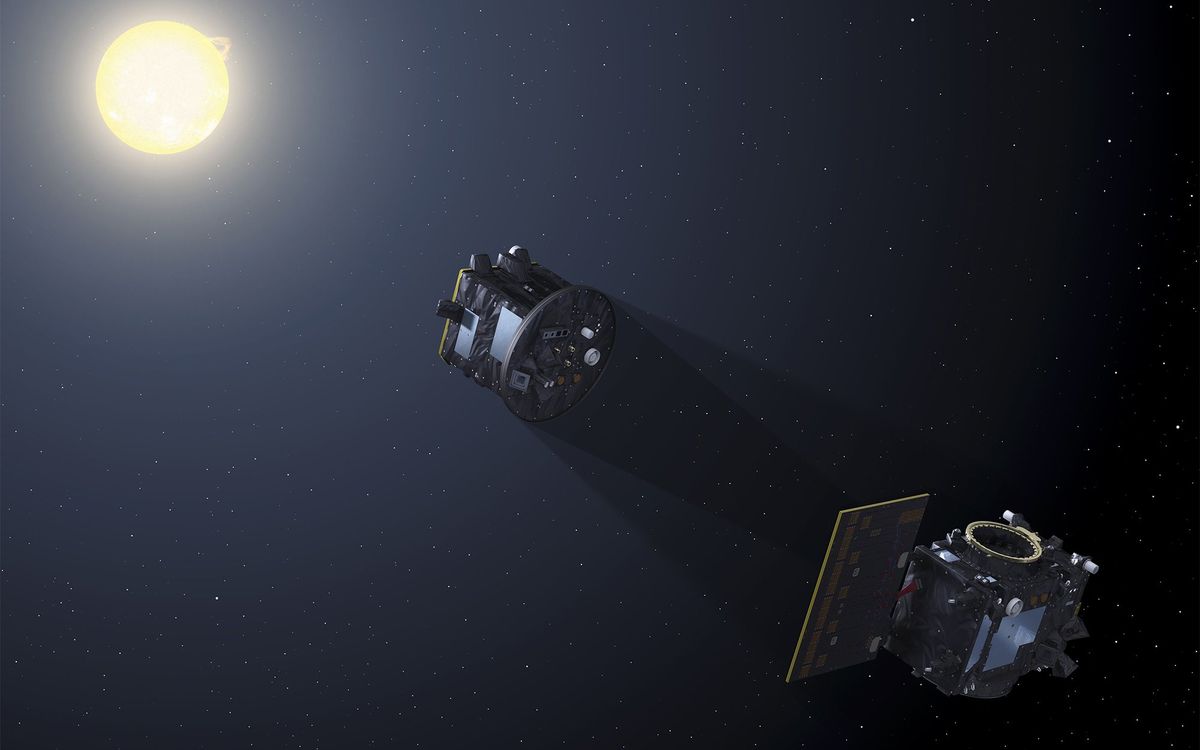What would it take to be as free as a bird—flying above the treetops with the wind in your face and the world far beneath your feet?
For Mariah Cain and Jeff Elkins, the team behind DragonAir Aviation of Panama City Beach, Fla., the answer is a personal flying machine that makes the pilot look like a skier grasping two poles, standing atop an oversized hobby drone. For Stephen Tibbitts, who built the Zero-emissions Electric Vehicle Aircraft (ZEVA) ZERO in Tacoma, Wash., it was a bulbous eight-foot disc in which a pilot lies prone, sped across the sky by eight propellers.
Maybe you’d design something different—like a tiny helicopter, open to the breeze? Or a lounge chair surrounded by a ring of rotors? How about a gondola with two sets of blades at its base? Or your machine might resemble a flying motorcycle, with rotors clustered in front and back.

Those are just some of the machines, many of them conceived by startups, built for a competition started by GoFly, a New York-based tech incubator. It plans to offer a US $1 million grand prize to the winners of a fly-off at NASA’s Ames Research Center in California from 27 to 29 February.
GoFly says more than 850 teams from 103 countries entered; they’re now down to five finalists for the grand prize, plus some 20 other contestants who will compete for additional prizes. There will be multiple winners: $250,000 prizes will go to the smallest and quietest vehicles, and $100,000 will be awarded to the best “disruptor.”
Boeing is the largest corporate sponsor of the competition, and organizations including Pratt & Whitney, Dell Technologies, and the American Institute of Aeronautics and Astronautics have also lent funding or expertise. The project is the brainchild of Gwen Lighter, the founder and CEO of GoFly.

“We said to all our teams, ‘What the device looks like and how it works is up to you,’” she said, “which is why there is such a wide range of designs within the GoFly competition.”
GoFly’s Contest Rules
GoFly has set some basic requirements: The vehicle must be able to fly 32 kilometers (20 miles) safely at a speed of at least 55.5 kilometers per hour, carry at least 90 kilograms of pilot and equipment, and not exceed a noise maximum of 87 decibels. It can be no longer than 2.5 meters.
One major requirement is that the vehicles be designed for vertical takeoffs and landings, or something close to it—conventional aircraft, which require long runways, need not apply. The flyers can use batteries, gasoline, or aviation fuel. Beyond that—well, the sky is more or less the limit.
DragonAir’s battery-powered Airboard 2.0 won’t fly itself, but Cain, who works both as the company’s president and test pilot, says a newcomer could safely work the controls (there almost are none) with very little practice.
“You strap in your feet, and then you stand up and you pull the trigger with your right hand and that’s the throttle,” she said. “Once you get up in the air, you just lean your body in the direction you want to go, and you’re off. The computers onboard do all the work, so it’s constantly stabilizing itself, with gyroscopes and accelerometers. Basically, it wants to be level all the time.”
ZEVA’s Tibbitts, an electrical engineer by training and an entrepreneur by temperament, says he can imagine a time when personal flyers are ubiquitous, controlled by artificial intelligence and powered by zero-emission batteries or fuel cells. They will fly from building to building, freeing occupants from the limitations of ground vehicles or conventional planes.
“It’s going to be so exciting to expose this to the world,” he said. “I believe this is truly the largest economic paradigm shift in our lifetimes.”
The Future of Personal Flight
All this may sound like an unlikely revolution—how many times have we been promised flying cars?—but GoFly’s backers say artificial intelligence, lightweight materials, and improved power sources are all reaching critical mass. Together, these technologies can make personal flight more than a pipe dream.
“There has been a convergence of breakthrough technologies that make this truly the first moment that we actually have the ability to make people fly,” said Lighter.

Tibbitts says he believes, eventually, the rise of personal flying vehicles will transform our lives. “It’s going to change everything,” he said. “It’s not going to happen overnight, of course, but we have finally entered the age of the Jetsons. And I think this year is when the world finds out about that.”
This article appears in the April 2020 print issue as “May
the Best Personal Flyer Win.”
Ned Potter is a New York writer who spent more than 25 years as an ABC News and CBS News correspondent covering science, technology, space, and the environment.



